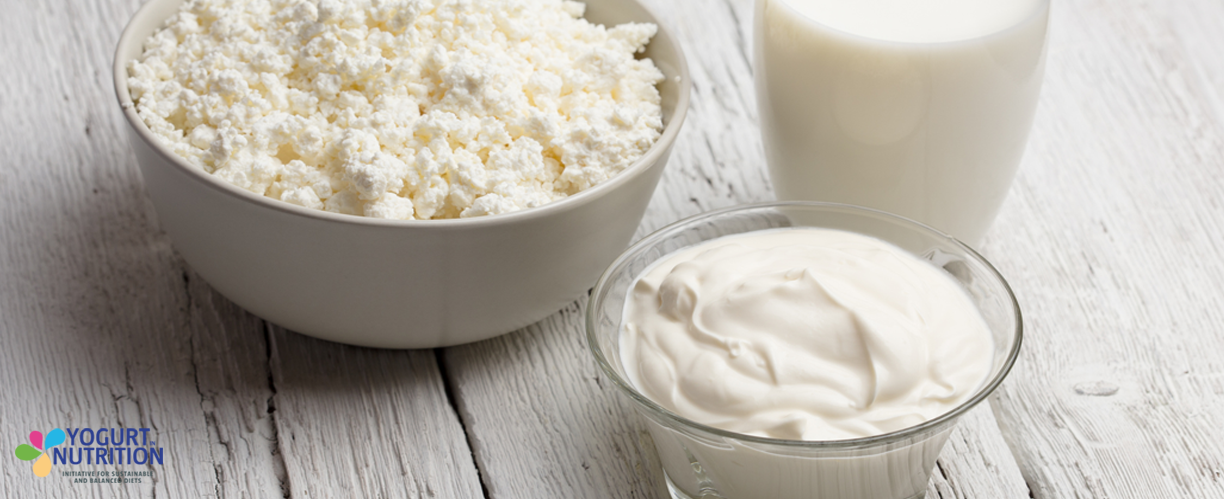A growing body of evidence reveals that eating whole-fat dairy foods doesn’t increase the risk of heart disease and may even be good for our cardiometabolic health. These findings fly in the face of previous conventional thinking that has led to dietary guidelines recommending we choose low-fat rather than whole-fat dairy products.
The unexpected findings have therefore prompted a flurry of research activity to re-examine how whole-fat dairy foods affect health beyond their saturated fat content.
Now a major step towards unlocking this mystery has been made by US researchers who have conducted a literature review into the biological mechanisms underlying the potentially beneficial associations between whole-fat dairy food consumption and risk markers for cardiometabolic health (1).
The secret, the researchers conclude, lies in the complex nutrient matrices of dairy foods and how these interact with the body.
Understanding the dairy food matrix
It is too simplistic just to look at the health effects of dairy foods according to the individual nutrients they contain; rather, we need to consider the whole food matrix – the unique combination and organisation of nutrients such as proteins, fats, vitamins, and minerals. The food matrix differs between milk, cheese, and yogurt, and may dictate how each dairy type affects cardiovascular risk.
In whole-fat dairy foods, part of the matrix comprises dairy fatty acids and polar lipids, contained within the Milk Fat Globular Membrane (MFGM). Researchers found that these components may contribute to cardioprotective benefits through complex pathways involving lipid metabolism, the gut microbiota, and inflammatory regulation.
Milk polar lipids may contribute to cardiometabolic health
Research has shown that milk polar lipids may contribute to improved cardiometabolic health by lowering blood cholesterol levels through reduced absorption of cholesterol in the intestine (2,3).
- Clinical studies suggest that eating whole-fat dairy foods containing milk polar lipids within the MFGM does not worsen an individual’s cholesterol.
- Milk polar lipids have been shown to improve markers of cardiometabolic health by interacting with the gut to reduce cholesterol absorption without disrupting the gut microbiota.
Results suggest that milk polar lipids present in the MFGM may also contribute to cardiometabolic health by reducing inflammatory responses to diet (4,5).
- Results from preclinical studies suggest that high doses of milk polar lipids can benefit cardiometabolic health by modifying inflammatory responses in the gut.
- Clinical studies show that milk polar lipids within the MFGM can increase levels of anti-inflammatory cytokines.
Some milk fatty acids can have beneficial cardiometabolic effects
The researchers discovered that individual fatty acids present in whole-fat dairy foods may benefit cardiometabolic health by modulating cholesterol levels and inflammatory or metabolic pathways.
- Study results suggest a potential role for dairy odd-chain fatty acids, C15:0 and C17:0, in promoting cardiometabolic health by modulating cholesterol levels, stimulating cell repair, and reducing inflammation (6).
- Preclinical studies suggest that dairy branched-chain fatty acids may benefit cardio-metabolic health through anti-inflammatory pathways, although more research is needed.
- Short- and medium-chain fatty acids have also been implicated in modifying inflammation and beneficial effects on energy homeostasis and metabolic health (7).
The dairy food matrix may play a role in the effects on cardiometabolic health
When the researchers examined the role of the dairy food matrix in the effects of whole-fat dairy foods on cardiometabolic health. They found that whole-fat dairy foods such as milk, cheese, and yogurt have different effects on cardiometabolic health that cannot be predicted by their saturated fat content alone but may be in part due to the differences in their food matrices.
- Dairy food matrix effects on lipid metabolism, the microbiome, and fat absorption and excretion may contribute to the neutral association between eating whole-fat dairy foods and risk of cardiometabolic disease.
- The fermented cheese matrix improves blood cholesterol, modulates markers of chronic inflammation, and increases the production of bioactive peptides.
- The fermented yogurt matrix may beneficially affect the gut microbiota and fermented milk may promote antihypertensive effects through angiotensin-converting enzyme (ACE)-inhibitory activity.
These examples highlight the complexity of various whole-fat dairy foods and how they may differentially impact cardiometabolic health.
“The dairy food matrix, how the macronutrients and micronutrients and other bioactive components of dairy foods are differentially compartmentalized among fluid milk, cheese, and yogurt, may dictate how each affects cardiovascular risk.”



